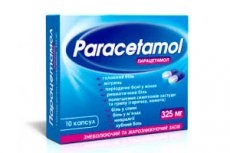Medical expert of the article
New publications
Paracetamol and alcohol: what are the dangers of taking it together?
Last reviewed: 04.07.2025

All iLive content is medically reviewed or fact checked to ensure as much factual accuracy as possible.
We have strict sourcing guidelines and only link to reputable media sites, academic research institutions and, whenever possible, medically peer reviewed studies. Note that the numbers in parentheses ([1], [2], etc.) are clickable links to these studies.
If you feel that any of our content is inaccurate, out-of-date, or otherwise questionable, please select it and press Ctrl + Enter.

Paracetamol is a painkiller and antipyretic, which is why it is taken for headaches, toothaches, menstrual pain, rheumatic pain, to relieve fever during flu and colds. The instructions for use contain a warning about its combined use with alcohol, their interaction is considered undesirable.
Compatibility of paracetamol and alcohol
Drinking small amounts of alcohol while taking paracetamol is usually safe. [ 1 ], [ 2 ] Even therapeutic doses of paracetamol have side effects, including increased activity of liver enzymes. The negative impact of alcoholic beverages on the organ is also beyond doubt. [ 3 ]
Everyone knows that liver cells under the influence of ethyl alcohol are replaced by connective tissue, hepatosis and cirrhosis develop. Many alcoholics die from this diagnosis. There are many clinical cases of liver damage from taking the recommended strict dose of paracetamol in people belonging to this category. [ 4 ], [ 5 ]
What happens if you drink paracetamol and alcohol?
The drug is converted in the liver into various metabolites, one of which, N-acetyl-p-benzoquinone imine, is very toxic. It is detoxified by the liver enzyme glutathione. But it is also used by the body to remove alcohol, or more precisely acetaldehyde, into which it is converted in the liver. [ 6 ], [ 7 ]
Its reserves are very limited and after 3-4 servings of alcohol they run out. In the absence of glutathione or a decrease in its content below 30%, damage to hepatocytes occurs. [ 8 ]
Toxic damage from paracetamol against the background of alcohol consumption occurs in several phases:
- 1st - general weakness, malaise, nausea, vomiting;
- 2nd - symptoms worsen, pain appears in the right hypochondrium;
- 3rd - yellowing of the skin and sclera appears, periods of drowsiness alternate with excitement, confusion, sometimes convulsions;
- 4th - recovery 3 weeks after therapy.
How long before you can drink?
To avoid the harmful effects of paracetamol on the liver under the influence of alcohol, you need to spread their intake over the day. Systematically drinking people need to reduce the dosage of the drug, since even small doses can lead to liver failure.
Lethal dose
Paracetamol toxicity develops at 7.5-10 g/day or 140 mg/kg. It has been recorded that the ingestion of 250 mg of the drug per kilogram of body weight caused severe organ damage in half of the patients, and 350 mg - in all, and this is even without interaction with alcohol. [ 9 ] Surely, a fatal outcome in alcoholics will occur from a smaller dose of the drug and this occurs in the third phase of the development of toxic hepatitis, if life-saving measures were not taken in a timely manner: gastric lavage, intake of absorbents, use of N-acetylcysteine - an antidote for this poisoning. It reduces its toxicity, increases the supply of glutathione, but does not restore previously damaged liver cells.

